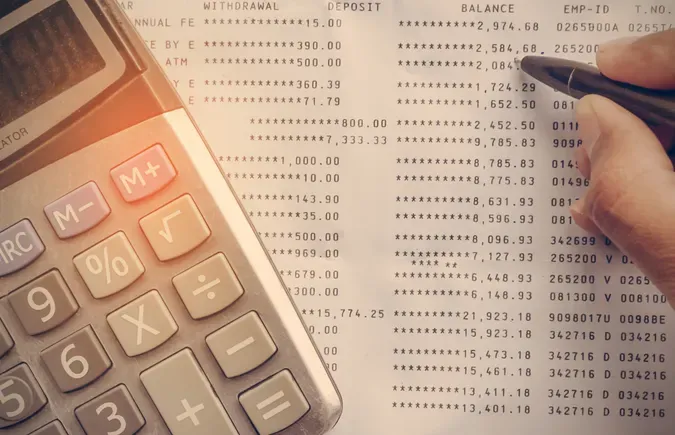Coming up with an estimate of how many people could qualify for immediate cancellation under the IDR waiver program announced on April 19, 2022, is very difficult. Data sources sometimes include borrowers with both undergraduate and graduate loans and offer conflicting information.
A government letter from February 2021 found at least 2 million borrowers with $40 billion of student loans have been in repayment for at least 20 years.
However, in an April 2021 response to questions from Senator Warren, the Department of Education has released very different data that is possibly more aligned with who would benefit from the IDR waiver rules.
In the Department of Education’s response to Senator Warren, it states it uses:
“Consolidation loan linking […] to identify the dates that the underlying loans entered repayment. The minimum enter repayment date of currently outstanding loans is identified and used to measure time in repayment. If the borrower currently has a loan in school or in grace, they are categorized as ‘In school/grace’.”
In other words, if you consolidate a loan, that loan might show only one year of repayment credit despite the fact that you, as a borrower, might have been in repayment for 20 years.
Using the method from this letter, the Department would count that borrower as having been in repayment for 21 years, while another report might find them being in repayment for one year.
The Department of Education’s method of payment counting in its response letter to Senator Warren utilizes the same approach that it will likely use in identifying eligibility for cancellation under the IDR waiver.
Furthermore, like the PSLF waiver, we expect that a borrower would be able to consolidate loans that have different payment credit counts. In this scenario, the borrower would receive credit for the highest payment count of an original loan that was used for the new consolidation loan.
Here’s the Department of Education’s estimate of the number of borrowers that have been in repayment for various periods of time, as of the most recently published data from April 2021. Given that these numbers are from more than a year ago, the numbers today are likely higher.
Source: Department of Education response to Sen. Warren’s April 2021 letter 1.Department of Education statement on the IDR waiver reveals that $211 billion could be cancelled 2. Why the Department of Education estimates aren’t lining up 3. Estimate doesn’t include the benefit of moving borrowers closer to IDR forgiveness 4. IDR waiver benefit for PSLF borrowers who’d get credit toward forgiveness 5.
The true total benefit of the IDR waiver remains unseen
Department of Education statement on the IDR waiver reveals that $211 billion could be cancelled
In the earlier February 2021 letter estimating the amount of debt that’s been in repayment for 20 years or more, it’s possible that the author didn’t count forbearances and deferments. The letter also states that loans under the Federally Guaranteed Loan Program and the HEAL program aren’t included, which would show up under the FFEL payment count.
It’s unclear if the numbers in the response letter to Sen. Warren represent the length of time since a borrower made their first payment or exited their in-school deferment for the first time.
This group of more than 4.4 million borrowers with over $211 billion of debt would likely not all be eligible for cancellation automatically.
Borrowers with commercially held FFEL Loans would first need to consolidate their loans, as the Department can’t provide automatic relief.
Furthermore, some of these borrowers certainly owe graduate student loans. This means they might need to be in repayment for 25 years instead of 20 to receive credit, as the PAYE program would probably not be available to them.
REPAYE allows for forgiveness after 20 years of payments on undergraduate loans and 25 years of payments on graduate loans.
Even so, a smaller subset of borrowers — within the larger 4.4 million who have graduate loans —would be within five years of cancellation at most, which would be life-changing.
Why the Department of Education estimates aren’t lining up
In the Department of Education press release announcing this IDR waiver program, it states:
“Federal Student Aid (FSA) estimates that these changes will result in immediate debt cancellation for at least 40,000 borrowers under the Public Service Loan Forgiveness (PSLF) Program.
Several thousand borrowers with older loans will also receive forgiveness through IDR.”
In the statement on FSA announcing the details of the IDR waiver, it states:
“Any borrower with loans that have accumulated time in repayment of at least 20 or 25 years will see automatic forgiveness, even if you are not currently on an IDR plan.”
Based on its own data, even after adjusting for borrowers who wouldn’t be automatically eligible for cancellation and would need to consolidate, the Department of Education’s estimate of the number of borrowers who’d benefit from cancellation in 2022 under the IDR waiver appears to be missing as many as three zeros.
That’d be welcomed news to borrowers, who’d save a massive amount of money. However, this relief does little for borrowers who’ve taken out loans recently and are struggling to make payments.
Estimate doesn’t include the benefit of moving borrowers closer to IDR forgiveness
A $300 a month average payment estimate for a borrower on an IDR plan roughly represents the payment on REPAYE for a borrower with an average college graduate starting salary. It would get 3.6 million borrowers at least three years closer to forgiveness.
3,600,000 borrowers x $300 payment x 12 months x 3 years = $38.9 billion in cumulative student loan savings.
You’d need to calculate the present value of this benefit in today’s dollars, but its estimate says the IDR waiver would move borrowers an average of three years closer to forgiveness, meaning some borrowers might benefit significantly more.
The Department of Education estimates 40,000 borrowers will receive immediate cancellation from PSLF thanks to the credit given to borrowers who were placed in forbearance for 36 months or more.
Using the average forgiven PSLF balance of $68,089 as of 2022, the IDR waiver could save borrowers approximately $2.7 billion.
The true total benefit of the IDR waiver remains unseen
The benefit that borrowers will receive under the IDR waiver requires time to see how many consolidate to qualify, how many borrowers are granted automatic forgiveness, and the guidance that the Department would issue to tailor benefits more narrowly.
However, based on an analysis of Department of Education data, canceling up to $211 billion of student debt would be a massive win for borrowers who qualify.
Refinance student loans, get a bonus in 2022 1 Disclosures $1,050 BONUS1 For 100k+. $300 bonus for 50k to 99k.1 VISIT LAUREL ROAD Variable 1.64-5.65%1 Fixed 2.25-5.75%1 2 Disclosures $1,000 BONUS2 For 100k+. $300 bonus for 50k to 99k.2 VISIT SPLASH Variable 1.74-6.52%2 Fixed 1.99-6.25%2 3 Disclosures $1,000 BONUS3 For $100k or more. $200 for $50k to $99,9993 VISIT SOFI Variable 1.74-7.99%3 Fixed 2.74-7.99%3 4 Disclosures $1,000 BONUS4 For 100k or more. $200 for 50k to $99,9994 VISIT EARNEST Variable 1.74-7.99%4 Fixed 2.44-7.99%4 5 Disclosures $1,050 BONUS5 For 100k+. $300 bonus for 50k to 99k.5 VISIT COMMONBOND Variable 4.44-8.09% APR5 Fixed 4.49-7.74% APR5 6 Disclosures $1,275 BONUS6 For 150k+. Tiered 300 to 575 bonus for 50k to 149k.6 VISIT ELFI Variable 1.86-6.01%6 Fixed 2.43-5.99%6 7 Disclosures $1,250 BONUS7 For $100k or more. $100 to $350 for $5k to $99,9997 VISIT LENDKEY Variable 1.90-5.25%7 Fixed 2.49-7.75%7 8 Disclosures $1,250 BONUS8 $350 for 50k to 100k8 VISIT CREDIBLE Variable 1.83-8.02%8 Fixed 2.15-8.73%8 Not sure what to do with your student loans?Take our 11 question quiz to get a personalized recommendation of whether you should pursue PSLF, IDR forgiveness, or refinancing (including the one lender we think could give you the best rate).
Take Our QuizOriginal Article




